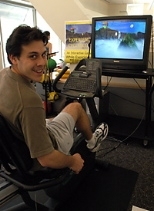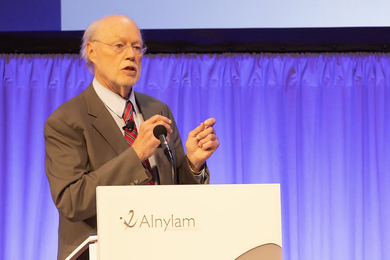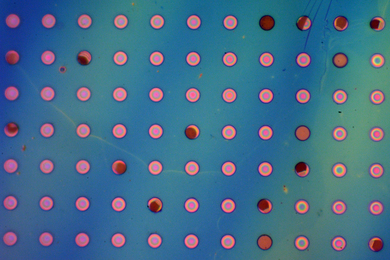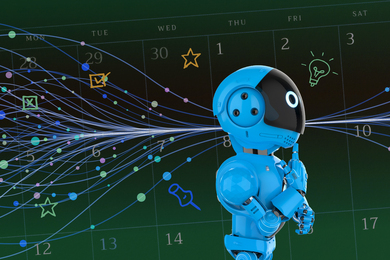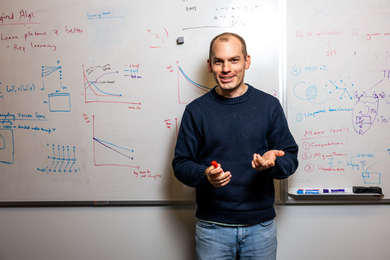The key to success with exercise has little to do with your fitness or appearance goals, say MIT students who used research on the psychology of exercise to create a motivational video exercise game. The key, they say, is distraction.
"People don't like to see time on the display. They don't want to see '15 minutes' flashing at them," said Harris Rabin, a graduate student at the Sloan School and a creator of CycleScore, an electronic hot-air balloon game wired to an exercise bike. "The balloon game distracts them from the boring exercise. It takes them into another world where they are a hot-air balloon."
CycleScore was created by Rabin, Doron Harlev and Joe Heitzeberg, all 29-year-old Sloan students, and their UROP partner, Dan Swanton, a junior in electrical engineering and computer science. The video game components--PC, keyboard and 32-inch TV--are wired to a Precor exercycle in the Zesiger Center's second-floor aerobics room for the MIT community to use.
As the pedals turn, the balloon rises into the air and floats along above mountain tops. Floats, that is, unless the user pedals too slowly, in which case the balloon loses altitude and smashes into a mountain. Exercisers gain points by avoiding obstacles and by snatching gold coins from thin air as they appear. The right handle on the Precor has been slightly altered to contain a thumb-operated button used to shoot moving targets for extra points.
It's a simple game, the sort you can handle even when gasping for breath. The CycleScore team's research showed that people wanted an exercise game that was interactive and fun but not complicated.
Like any good X-Box game, CycleScore records users' names and points, motivating the competitive player to try to outscore all other users.
Hayden Marcollo, a postdoctoral associate in ocean engineering, tried out the game during his regular workout at the Z-Center and gave it a thumbs-up. "It was peaceful because it was a balloon," he said. "If it was a picture of an angry man riding a bike, it would have been less peaceful."
The students built the project with a $30,000 grant from the iCampus Project, an MIT-Microsoft partnership. Sloan School Associate Professor Dan Ariely served as faculty advisor, helping the students prepare their survey of students' exercise motivations. For more information, see http://icampus.mit.edu or visit CycleScore's web site at http://belab.mit.edu/~cyclescore.
A version of this article appeared in MIT Tech Talk on May 5, 2004.
